Fragrant Plants for your Garden Landscape

35 Fabulous Fragrant Plants
Whether you're yearning to infuse your garden with the calming scent of lavender or savoring the sweet, lush fragrance of jasmine, integrating scented plants into your garden landscape offers a versatile array of options. From garden beds and accent plant placements to containers and hanging baskets, there are numerous creative ways to incorporate these aromatic wonders into your outdoor haven. Elevate your gardening experience by strategically placing scented plants, transforming your space into a sensory oasis that delights with every breeze.
For Year Round Fragrant Foliage
Incorporating year-round fragrant foliage into your Arizona landscape using plants like lavender, lemongrass, lemon verbena, mints, rosemary, sage, Salvia leucantha, scented geraniums, and society garlic can add both visual appeal and aromatic interest. Below, you'll find tips for each plant!
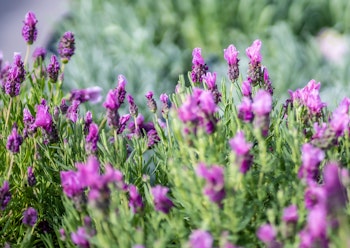
Lavender
Lavender can add a touch of timeless elegance and a soothing, sweet fragrance to your desert garden and landscape. With its distinctive floral scent, lavender not only adds aromatic charm to your outdoor space but also serves as a versatile herb with various culinary and therapeutic uses. Lavender's slender spikes of purple flowers create a visually appealing display, and its fragrant blooms can be harvested for sachets, essential oils, or culinary applications. Known for its calming properties, lavender enhances the sensory experience in your garden while attracting pollinators, making it a delightful and functional addition to your landscape.
- Choose varieties that are well-suited to Arizona's climate, such as Spanish lavender (Lavandula stoechas).
- Plant in well-draining soil in a sunny location.
- Prune regularly to encourage bushier growth and more blooms.
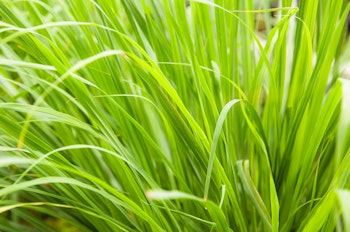
Lemon Grass
Lemon grass brings a refreshing citrusy, lemony aroma that not only adds a delightful scent to the air but also serves as a culinary herb, enhancing your cooking with its unique flavor. Its versatile uses extend to being a natural insect repellent, making it both practical and aromatic in the garden.
- Plant in a sunny location with well-draining soil.
- Water consistently, as lemon grass prefers consistently moist soil.
- Harvest and use the leaves for culinary purposes to release their citrusy fragrance.
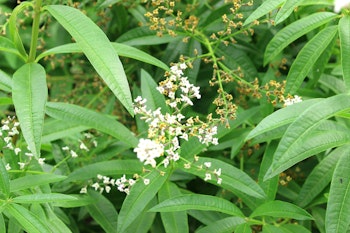
Lemon Verbena
This aromatic herb is appreciated for its strong lemon scent that invigorates the senses. It not only contributes to the fragrance of your garden but also offers culinary uses, as the leaves can be used to infuse teas or add a lemony essence to dishes, bringing both sensory pleasure and practicality to your outdoor space.
- Plant in a location with well-drained soil and full sun to partial shade.
- Prune regularly to maintain a bushy shape and release the lemony scent.
- Water deeply but allow the soil to dry out between waterings.
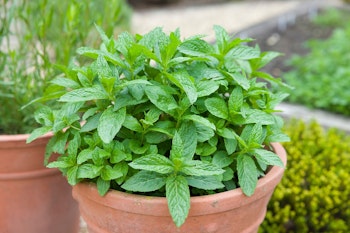
Mints
Including various types of mint, such as peppermint and spearmint, in your desert garden provides a spectrum of refreshing and minty aromas. Beyond their aromatic foliage, mints offer culinary versatility, enhancing your cooking with their distinct flavors. Additionally, the potent scent of mint acts as a natural insect repellent, making it a functional and fragrant choice for your garden.
- Key Planting Tip: Plant mint in containers to prevent it from spreading aggressively.
- Provide partial shade, especially during the hottest parts of the day.
- Harvest the leaves regularly to promote bushy growth and release the minty aroma.
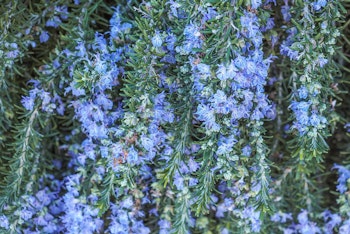
Rosemary
Rosemary can make a wonderful addition to your desert garden, offering a woody, pine-like scent that adds a pleasant aroma to the air. This drought-tolerant herb not only serves as an aromatic delight but is also a versatile culinary herb, enriching your dishes with its unique flavor profile. Its resilience and aromatic charm make it a valuable addition to any garden in the arid climate.
- Choose a well-draining location with full sun.
- Water deeply but infrequently, as rosemary prefers slightly drier conditions.
- Prune regularly to maintain shape and encourage new growth.
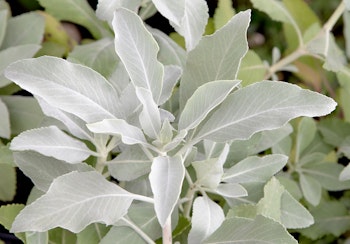
Sage
Sage is a valuable plant that provides an earthy and herbal fragrance and adds a touch of aroma to your outdoor space. Drought-tolerant and low-maintenance, sage is not only an ornamental delight but also serves culinary purposes, making it a dual-purpose herb for both sensory enjoyment and practical use in the kitchen.
- Plant in well-draining soil in a sunny location.
- Allow the soil to dry out between waterings.
- Prune regularly to prevent leggy growth and to harvest leaves for culinary use.
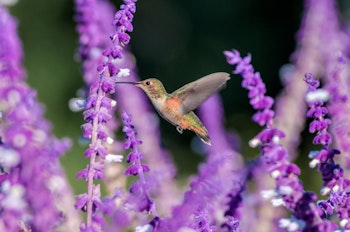
Salvia leucantha
Salvia leucantha, (also known as Mexican Bush Sage) with its mild and sweet scent, can make a beautiful ornamental addition to your desert garden. The plant's striking flowers add visual interest, while its fragrance enhances the overall sensory experience. Attracting pollinators, this salvia variety contributes to a thriving and vibrant garden ecosystem.
- Plant in a sunny location with well-draining soil.
- Water regularly, especially during the dry periods.
- Prune in late winter or early spring to encourage new growth.
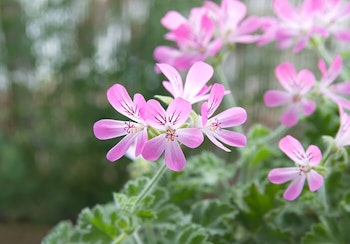
Scented Geraniums
Scented geraniums are a diverse group of plants, each offering a unique fragrance such as rose, lemon, or mint. Their ornamental value extends beyond their aromatic foliage, bringing diversity to your garden. The leaves of scented geraniums can be used for potpourri or culinary purposes, making them a versatile and fragrant choice for your desert garden and landscape.
- Plant in well-draining soil with partial to full sun.
- Water consistently, keeping the soil evenly moist.
- Pinch back regularly to encourage bushiness and release fragrance.
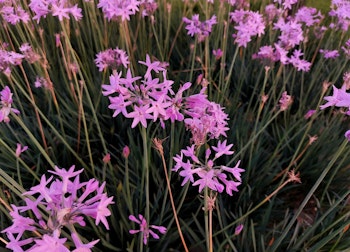
Society Garlic
Society garlic can make an excellent addition to your garden, providing a mild garlic scent when the leaves are crushed. This low-maintenance ornamental plant not only adds a subtle garlic aroma to the air but also serves as a culinary herb, making it a dual-purpose and aromatic choice for both landscaping and cooking enthusiasts.
- Plant in well-draining soil in a sunny location.
- Water moderately, allowing the soil to dry out between waterings.
- Divide the plants every few years to maintain vigor.
Placement Recommendations
Consider the overall design and placement of these plants in your landscape to create a harmonious and fragrant environment. Grouping plants with similar water and sunlight needs can also make maintenance more manageable. Plus, incorporating these fragrant plants near outdoor seating areas or pathways can add to your outdoor enjoyment.
Seasonal Fragrant Blooms
Using seasonal scented plants in the Valley can enhance your garden's sensory experience. Read more to learn about ways you can incorporate the below plants into your desert garden and landscape.
 Alyssum
Alyssum
- Plant alyssum along borders, pathways, or in containers.
- Its sweet fragrance makes it an excellent choice for edging in flower beds or hanging baskets.
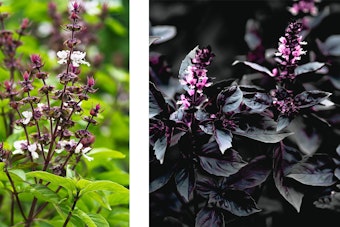 Basils
Basils
- Grow basil in herb gardens or mixed with other ornamental plants.
- The aromatic leaves can be used for culinary purposes, and the plant attracts pollinators.
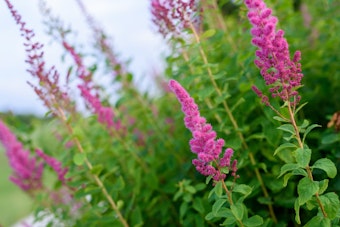 Buddleia (Butterfly Bush)
Buddleia (Butterfly Bush)
- Plant butterfly bush in sunny locations to attract butterflies.
- Use it as a focal point in your garden, and enjoy its fragrant, nectar-rich flowers.
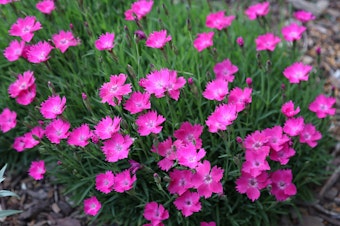 Carnations/Dianthus
Carnations/Dianthus
- Plant carnations in flower beds, borders, or containers.
- Their sweet fragrance and vibrant colors make them suitable for cut flower arrangements.
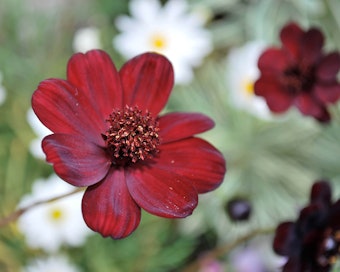 Chocolate Cosmos (Cosmos atrosanguineus)
Chocolate Cosmos (Cosmos atrosanguineus)
- Plant chocolate cosmos in well-draining soil and full sun.
- Enjoy its chocolate-scented, dark brown flowers in garden beds or containers.
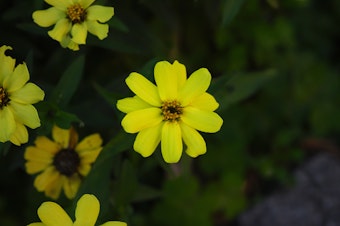 Chocolate Flower (Berlandiera lyrata)
Chocolate Flower (Berlandiera lyrata)
- Plant chocolate flowers in well-draining soil and full sun.
- The flowers release a chocolate scent in the afternoon heat.
- Image Shown: Yellow Chocolate Flowers
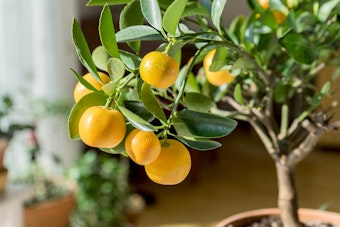 Semi-Dwarf Citrus
Semi-Dwarf Citrus
- Grow semi-dwarf citrus trees in containers or in well-draining soil in the ground.
- Enjoy the fragrance of citrus blossoms and harvest fresh fruits.
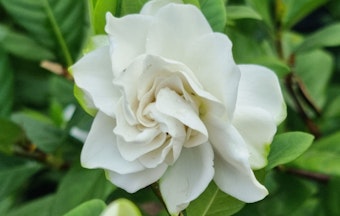 Gardenia
Gardenia
- Plant gardenias in partial shade with well-draining soil.
- Use them as ornamental shrubs in garden beds or as potted plants on patios.
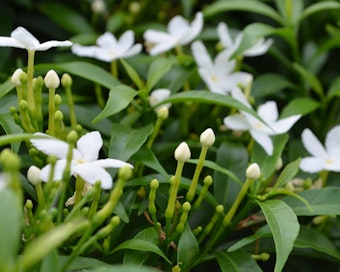 Jasmines
Jasmines
- Plant jasmine vines along fences, trellises, or pergolas.
- The fragrant flowers add a delightful aroma to the air, especially in the evening.
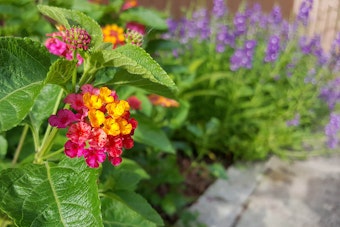 Lantana
Lantana
- Plant lantana in full sun in garden beds or containers.
- Enjoy the aromatic flowers and attract butterflies to your garden.
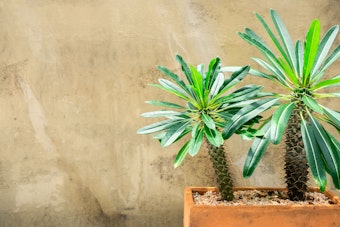 Madagascar Palm (Pachypodium lamerei)
Madagascar Palm (Pachypodium lamerei)
- Plant Madagascar palms in well-draining soil in full sun.
- Use them as unique focal points in xeriscape gardens or as container plants.
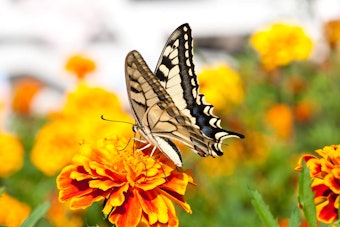 Marigolds
Marigolds
- Plant marigolds in garden beds or containers for vibrant color.
- Their earthy, pungent scent can help repel certain pests, making them a practical addition to vegetable gardens.
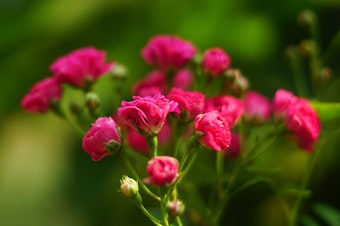 Mini Roses
Mini Roses
- Grow mini roses in containers or as edging along pathways.
- Enjoy their classic rose fragrance and use them for small-scale landscaping.
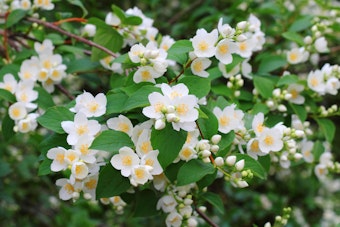 Mock Orange
Mock Orange
- Plant mock orange in well-draining soil in partial to full sun.
- Use it as a fragrant hedge, border, or standalone shrub in garden beds.
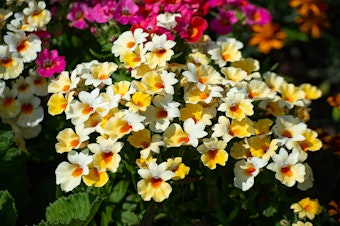 Nemesia
Nemesia
- Plant nemesia in well-draining soil and partial sun.
- Use it in containers, hanging baskets, or as ground cover for its sweet fragrance and vibrant blooms.
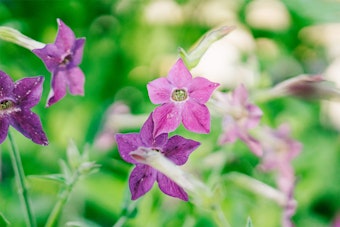 Nicotiana
Nicotiana
- Grow nicotiana in well-draining soil and partial to full sun.
- Use it as a backdrop in flower beds or containers for its fragrant, trumpet-shaped flowers.
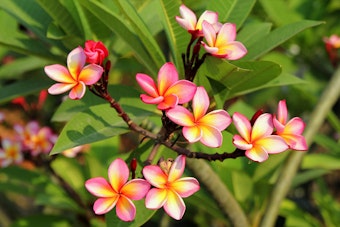 Plumeria
Plumeria
- Plant plumeria in well-draining soil in full sun.
- Use it as a focal point in your garden or in containers on patios, and enjoy its tropical fragrance.
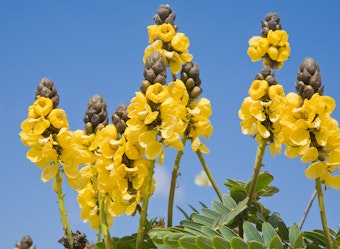 Popcorn Cassia
Popcorn Cassia
- Plant popcorn cassia in full sun and well-draining soil.
- Enjoy its yellow flowers with a scent reminiscent of popcorn, and use it as a shrub or small tree in your landscape.
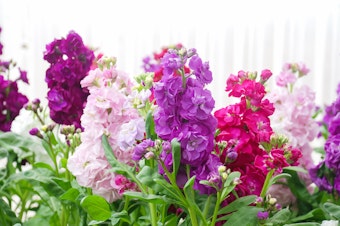 Stock
Stock
- Grow stock in well-draining soil and full sun.
- Use it in flower beds or containers for its spicy-sweet fragrance, and consider it for cut flower arrangements.
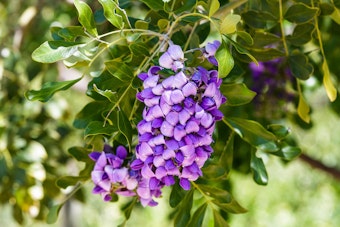 Texas Mountain Laurel
Texas Mountain Laurel
- Plant Texas Mountain Laurel in well-draining soil and full sun.
- Use it as a focal point in your landscape for its fragrant purple flowers and evergreen foliage.
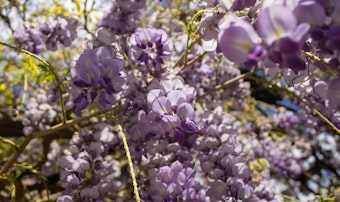 Wisteria (Patio Tree Form)
Wisteria (Patio Tree Form)
- Train wisteria into a patio tree form for vertical interest.
- Plant it near pergolas, trellises, or other structures where it can provide shade and release its sweet fragrance.
Consider the following tips when planting:
- Group plants with similar water and sunlight needs together for efficient irrigation.
- Provide adequate irrigation, especially during the hot summer months.
- Choose planting locations that offer well-draining soil to prevent waterlogging.
- Use a layer of mulch to help retain soil moisture and regulate temperature.
- Incorporate these plants strategically near outdoor seating areas, windows, or entryways to maximize fragrance enjoyment, or use them to create focal points, borders, or fragrant walkways in your landscape.
- All can be planted in-ground, while some can also be enjoyed in containers with the proper watering.
Seasonal Fragrant Bulbs
These beautiful bulbs can add a burst of color to your spring garden and landscape. They are best planted in the fall according to the directions for each specific flower variety:- Crocus
- Freesia
- Hyacinth
- Narcissus
- Oriental Lily
- Tulip

By strategically placing and combining these scented plants, you can create a garden that not only looks beautiful but also engages your sense of smell throughout the seasons!
Stop by your local SummerWinds Nursery today and speak with one of our Trusted Garden Advisors for more great garden ideas...


